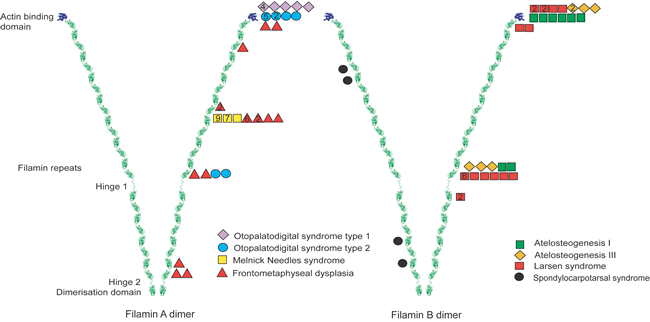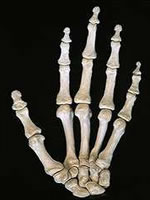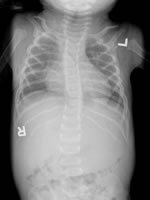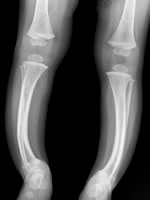This group of diseases demonstrates X linked inheritance and is characterised by abnormalities of the skeleton. More severely affected boys can have cleft palate in addition to abnormalities of the heart, kidneys, brain and gastrointestinal tract. There are four otopalatodigital syndrome spectrum disorders (OPDSD):
- Otopalatodigital syndrome type 1
- Otopalatodigital syndrome type 2
- Frontometaphyseal dysplasia
- Melnick Needles syndrome
Work begun by Professor Robertson in 1995 culminated in the identification of mutations in a gene called FLNA in 2002 as being responsible for otopalatodigital syndrome spectrum disorders. This work would not have been possible without the courageous help of a large Māori family from Auckland who were afflicted with the condition and lost eight boys to the disorder. Their story has been told in magazine and newspaper articles and in a television documentary, Lifting of the Makutu, that was produced and directed by Peta Carey.
The finding that these disorders were caused by mutations in FLNA was of considerable interest to the medical and scientific community because filamins were formerly considered to be structural components of the cytoskeleton, and not thought to be critical in the development of the organ systems affected in these disorders.
Work on the filamin A-associated disorders is ongoing, with referral of samples for analysis from families and individuals from around the world. Collation of their phenotypes and mutations within the FLNA gene is yielding new insights into how these disorders arise, and what functions filamins mediate during human embryonic development. In collaboration with Dr Andrew Sutherland-Smith, Massey University, we are also investigating structure function relationships that will lead to insights into the biological function of filamin A.
Ongoing work in the Laboratory for Genomic Medicine on the OPDSD involves the following initiatives:
- Expanding the understanding of the expression of these disease phenotypes and correlating them with mutations. Clinicians from around the globe submit samples from families for analysis by the laboratory.
- Searching for a mechanistic basis for the OPDSD using biochemical, genetic and structural approaches.
Funded by Curekids, the Health Research Council, and the Marsden Fund.

Schematic diagram showing critical sites in filamin dimers responsible for OPDS disorders.
X-ray images of the hand, body, and legs from patients with OPDSD


